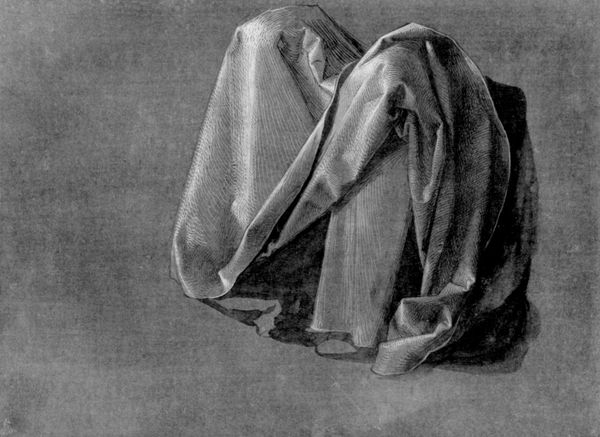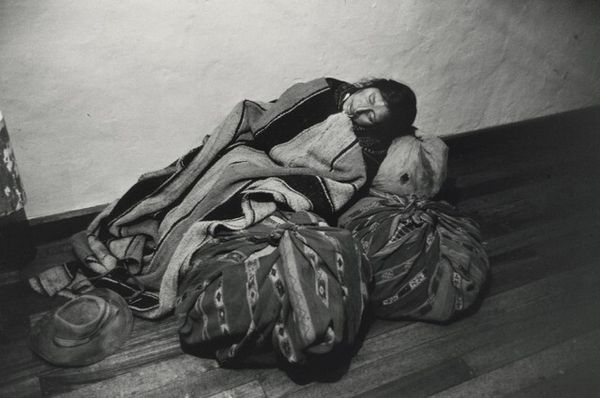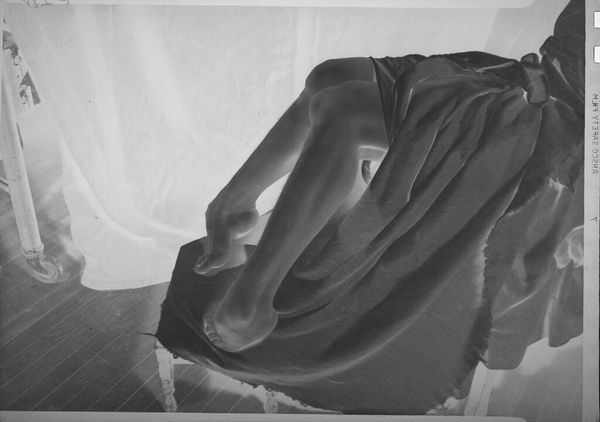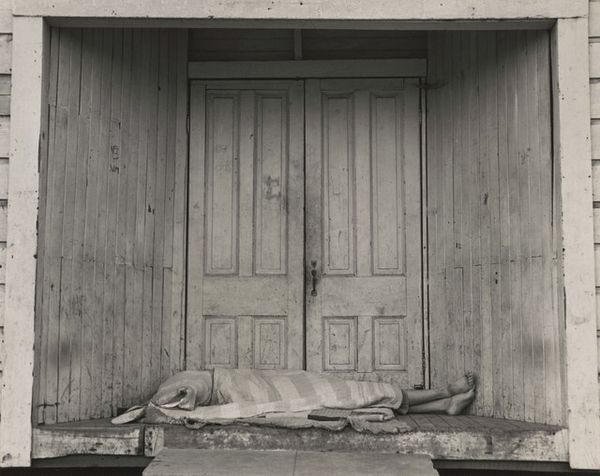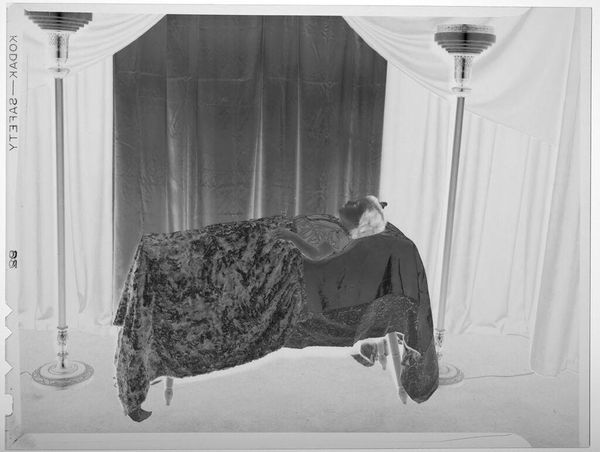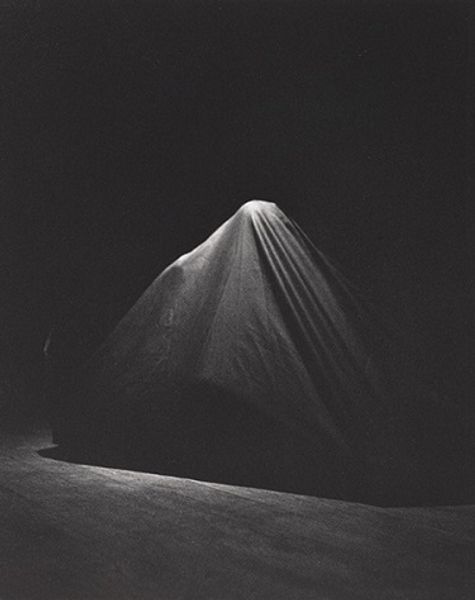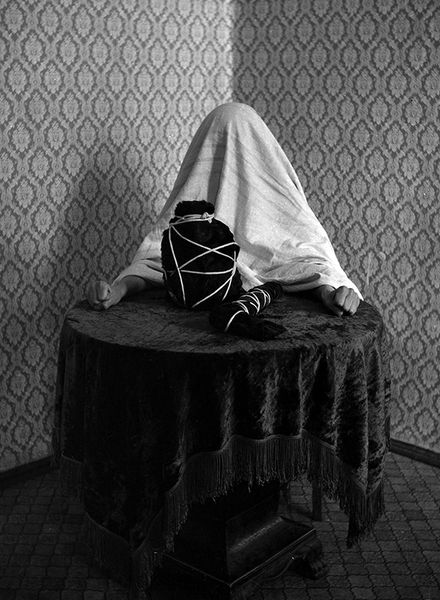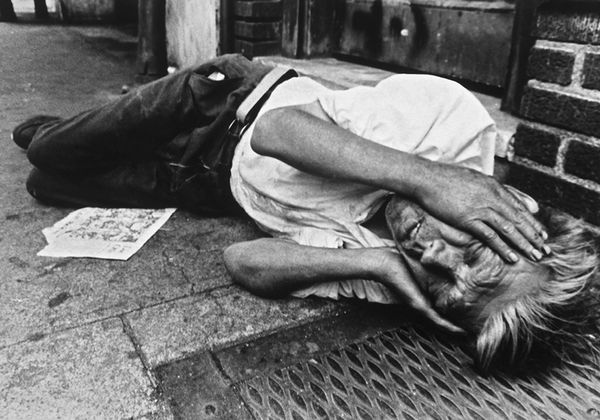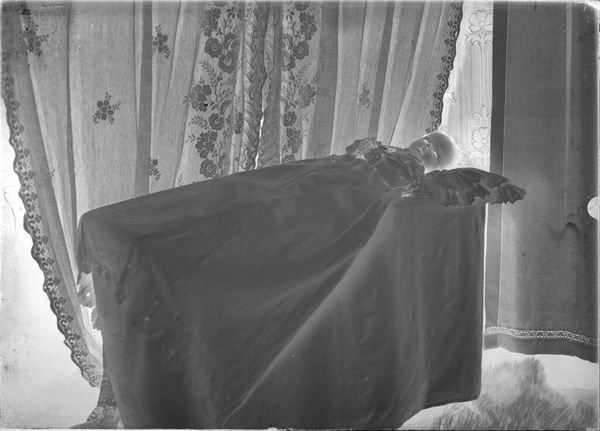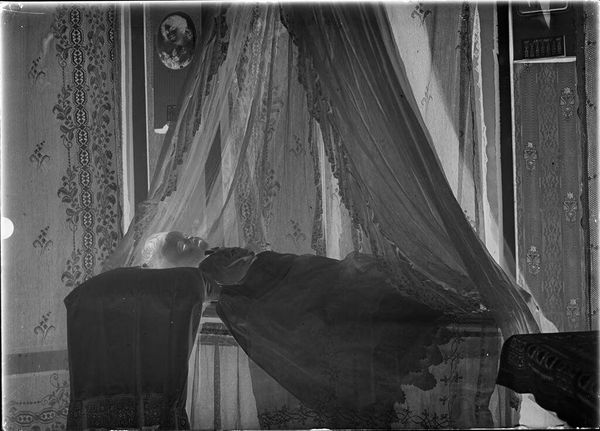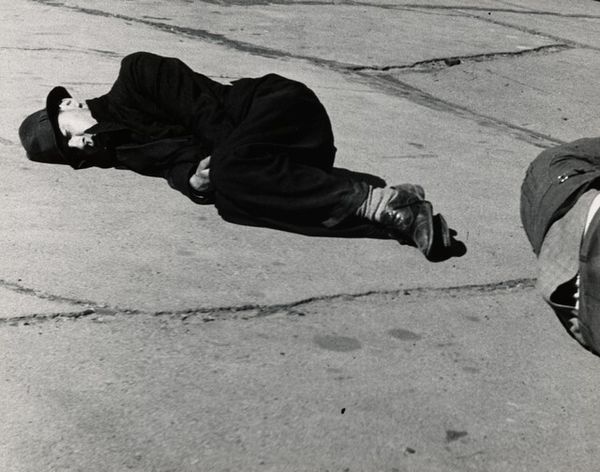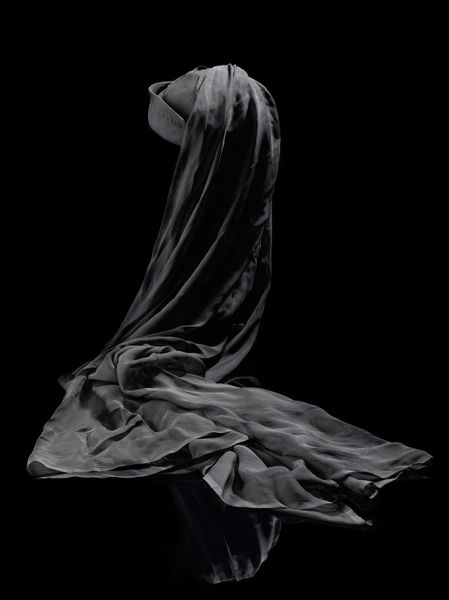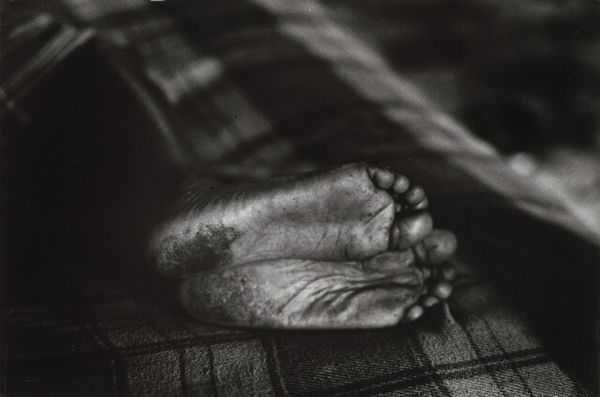
photography, sculpture, installation-art
#
conceptual-art
#
minimalism
#
sculpture
#
black and white format
#
photography
#
body-art
#
sculpture
#
installation-art
#
monochrome
Copyright: Antony Gormley,Fair Use
Curator: This is “Sleeping Place,” a 1973 work by Antony Gormley. It exists as both a sculpture and a photograph documenting the original installation. Editor: Well, my immediate impression is one of…enclosure. Almost claustrophobia. This form swathed in what looks like plaster-soaked cloth has an oppressive feel to it. What do you make of its shape? Curator: Intriguing, because the very materials—plaster, cloth—belie the sense of permanence. It presents a paradox: fragile materials attempting to mimic, or perhaps mock, monumentality. Notice how Gormley carefully articulates the draping to emphasize the horizontality. Editor: Good point. Thinking historically, it feels of a piece with other body art experiments from the 70s. Artists grappling with the boundaries between the self and its representation in a rapidly changing political landscape. Was this ever exhibited publicly at the time? Curator: Details on its initial exhibitions are scant, actually. Its existence as a photograph suggests the performance, the event, might have been as important as the object itself. The monochrome intensifies this reading. What are your thoughts? Editor: Right, it pushes us to think about absence and presence simultaneously. What's beneath the plaster? A body, ostensibly. Yet the body is entirely absent from the picture, isn’t it? Erased. Curator: Precisely! It’s about what is *implied*. Think about how Gormley used his own body as a point of origin, which is the catalyst for his later cast iron sculptures. We can decode his preoccupation by viewing "Sleeping Place" through this lens. Editor: That prefigures much of his later, well-known work where he is trying to deal with individual anonymity in the modern era. The very public nature of that art is an antithesis of the shrouded intimacy of "Sleeping Place." It seems so quiet, almost reverential in contrast. Curator: Yes, exactly. It seems like "Sleeping Place," far from a mere preliminary, contains the core elements which are so evident in Gormley's further exploration of the body and space, but manifested with a very private, minimal expression. Editor: A telling prelude then, wouldn't you agree? It casts his better-known works in an even starker light knowing their origins.
Comments
No comments
Be the first to comment and join the conversation on the ultimate creative platform.
